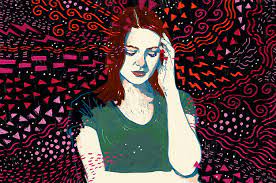AUTISM Spectrum Disorder comprises a range of psycho-social, behavioural and emotional difficulties in children and adults that can affect their day-to-day functioning, educational goals, employment opportunities and independent living options. Early identification of the disorder is important so that appropriate interventions including speech therapy, behaviour management and social skills trainings can be quickly initiated for improved prognosis. In the last 15 years, medical professionals have become more aware about autism in Pakistan and there are huge numbers of children now being diagnosed with ASD all over the country.
Autism has so far been viewed mostly as a boys’ disorder The Centre for Disease Control in the Washington states on its website that autism is four times more common in boys than in girls. However, recent studies are evolving another point of view supported by famous autistic women, such as Temple Grandin, Susan Boyle, Donna Williams, Valerie Paradiz and others, that the number of girls with autism may be more than this ratio of 4:1.
Since many women are successful in ‘masking’ their typical autistic traits such as social anxiety and sensory overload, and have fewer repetitive behaviours, it is difficult to diagnose them as autistic at a young age as they have learnt to ‘copy’ typical behaviours of their peers and have a greater ability to hide their symptoms. As a result, many women are diagnosed late and mainly through self-reported autistic traits, some even when they are in their 50s and 60s.
Another common belief is that autism in females is more severe and mostly conjoined with significant intellectual disability. While this is true in most cases, it could also mean that medical professionals are missing out on girls who have mild symptoms, are high-functioning or have Asperger’s syndrome. Interestingly, Dr. Asperger had suggested in 1943 that the onset of autism in some females just might be after puberty. It is now emerging that the different symptoms of autism can have different expressions in females, an aspect that is currently missing from the DSM V diagnostic criteria for ASD.
Many parents have reported that their girls went undiagnosed by clinicians, or were given other diagnoses such as attention deficit hyperactivity disorder (ADHD), obsessive-compulsive disorder (OCD) and even anorexia. A study conducted by Marion Rutherford with UK clinicians in 2016 found that the ratio of autism in adults could be as much as 2:1 for males and females.
The consistently low numbers of girls diagnosed with autism may also be the outcome of cultural and patriarchal gender biases. While parents are prone to deny the existence of any disorder in their children, when the school teacher also fails to report that something is amiss, they prefer not to delve too deep in interpreting signs of maladjustment that their daughter may frequently demonstrate.
The idea that there may be a ‘female autism phenotype’ that may be quite different from the current male-centred diagnostic criteria of autism that consistently underestimates gender differences, is now being explored by scientists in the US and UK, some of whom are parents like Kevin Pelphrey or autistic like Robyn Steward.
Autistic girls demonstrate fewer problems with motor skills, may be more socially motivated and able to internalise their frustrations rather than expressing themselves through violent and/or bizarre behaviours, but they may have higher levels of passivity, anxiety and depression. They can also have intense emotions, impulsivity, mood swings and psychological distress that may lead them to succumb relatively more easily to other personality disorders. For example, the co-occurrence of anorexia nervosa — over 10 females to one male — may suggest a link with an autism diagnosis as many anorexic patients demonstrate typical traits of ASD such as self-concern, inflexibility and particularity.
In Australia, Jane McGillivray and her colleagues compared 25 autistic boys and 25 autistic girls with a similar number of typically developing children. “On a measure of friendship quality and empathy, autistic girls scored as high as typically developing boys of the same age — but lower than typically developing girls.”
In fact, in a current study being carried out by Harvard, UCLA and the University of Washington, preliminary findings are that “girls with autism are not like boys with autism … in short, the brain of a girl with autism may be more like the brain of a typical boy than that of a boy with autism.” This is indeed an eye-opener, as it suggests that the so-called ‘typical’ males may have the same type of brains as ‘atypical’ females diagnosed with autism. This finding may effectively turn the entire methodology of ASD diagnosis on its head.
A different set of assessment tools are needed to define and measure the subtle ways in which autistic women cope with the world around them, “superficially” managing and camouflaging social and personal relationships in the initial family environment, in schools and college, workplaces, and later on in their married lives. Their personality disorders become more prominent as they continue to struggle with higher stress levels without a diagnosis that could have given them a sense of personal identity earlier on, helped them to explore their innate talents, prevented at least some conduct disorders and psychopathological problems, improved the quality of their lives, and protected them from many mortifications arising out of their social naivete.
All this is very interesting and groundbreaking, so parents and professionals in Pakistan should be wary of accepting the 4:1 ratio of boys and girls on the autism spectrum at face value.
In fact, our psychologists and researchers should come up with fresh findings on the subject especially in our traditional and cultural settings where many autistic girls have no option other than to blend in with norms of social behaviour and expectations framed by a male-dominated society, and remain undiagnosed and misunderstood until they reach a crisis point in their lives.
Published in Dawn, April 16th, 2021.
Dawn Editorial 15 April, 2021.

